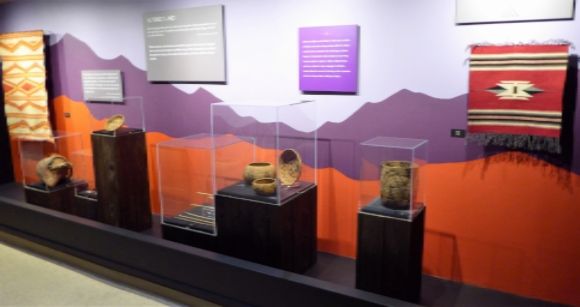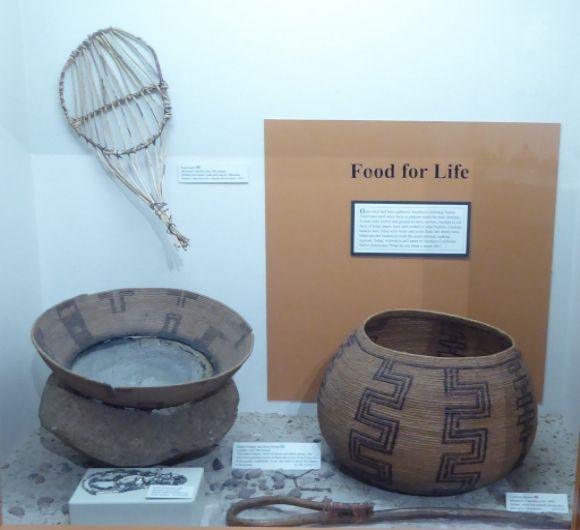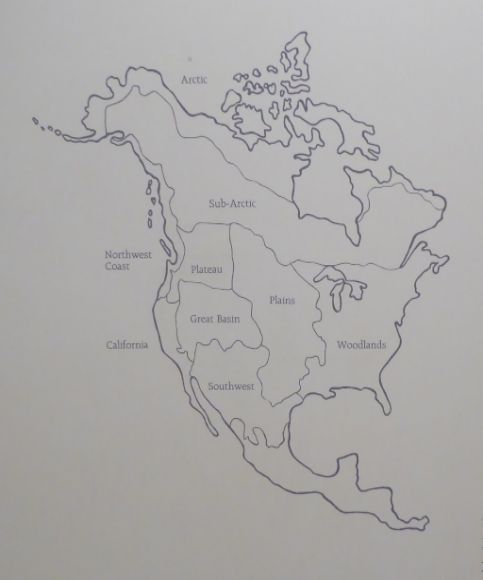California’s Maidu Indians
The Maidu inhabited a series of mountain valleys in northeastern California. In general, the area occupied by the Maidu had an elevation of more than 4,000 feet above sea level. The Maidus are usually divided into three main groups, based elevation: valley, foothill, and mountain. Of the these, the valley group Maidus were most numerous.
In many areas, where winter would allow, they had permanent villages, while in other areas they had villages which were occupied only during the warmer months. Each village community, which consisted of several adjacent villages, was considered an autonomous political and social entity: there was no overall Maidu government.
In his classic 1925 Handbook of the Indians of California, A. L. Kroeber describes the Maidu territory this way:
“Their territory may be described as consisting of the drainage of the Feather and American Rivers: or differently stated, the region from the Sacramento River east to the crest of the Sierra Nevada.”
With regard to the territory for each village community, Francis Riddell, in an entry in the Handbook of North American Indians, reports:
“A village-community owned and defended a known territory, which was a common hunting and fishing ground for all members of the community.”
A.L. Kroeber reports:
“The area claimed by each village community was very definitely known and sometimes marked. It has even been said that the boundaries were more or less regularly patrolled to guard against poachers. Even game that had been wounded outside but died within the territory of a community belonged to the latter people and not to the hunter.”
Regarding the patrol of territorial boundaries, Francis Riddell reports:
“The boundaries of the community property were guarded by different pairs of men selected each week to protect against poachers. They wore a single magpie feather upright on the top of the head.”
With regard to language, Maidu is a part of the Penutian language family and is, therefore, related to Miwok, Patwin, Yokuts, and Wintun.
Political leadership included a village headman or chief. This was not an inherited position, nor was it a position of great political or economic power. The characteristics of the chief included generosity, wealth, maturity, and the ability to lead. The chief was chosen with the help of a shaman who consulted the spirits. Francis Riddell reports:
“Since there was no complex political organization, the shaman, with his mysterious powers and spiritual communication, provided a sense of unity among the village community.”
Francis Riddell also reports:
“The Maidu shamans inherited their office. The son, only following the death of his father, would become very ill and after a period of ceremony within the danced house he left the village and spent some months in the mountains where he met and won the favor of the spirits who were to be his guardian powers.”
While the Maidu were a hunting and gathering people, they did have one domesticated plant. Francis Riddell reports:
“Tobacco (Nicotiana attenuate) was the only cultivated plant. Pipes were one piece and tubular.”
Pipes was generally made from wood; stone pipes used in ceremonies.
The Riverside Metropolitan Museum in Riverside, California, has a small diorama on the Maidu.
 This map shows the location of the Maidu
This map shows the location of the Maidu 
 Shown above is a small diorama of a Maidu village. This diorama was made by the Smithsonian Institution in 1898-1900.
Shown above is a small diorama of a Maidu village. This diorama was made by the Smithsonian Institution in 1898-1900.
According to the Museum display:
“The round house is a main part of a Maidu village. Built of wooden boards, it is a large dance house. Individual houses were once made of only wood, but the summer house in the model is constructed of trade cloth and tent canvass. A woman is carrying a gathering basket filled with food. Women are gathered in the open air work area, shade by a grass arbor where they are pounding and leaching acorns for eating. Seeds are spread on a drying platform. The structure is made of sticks is a granary for storing acorns. The men are playing a game using dice tossed into a basketry gaming tray.”
 Diorama detail showing the summer house and the women preparing acorn flour.
Diorama detail showing the summer house and the women preparing acorn flour.  Diorama detail showing the round dance house and the men gaming.
Diorama detail showing the round dance house and the men gaming.  Diorama detail showing the ramada and seed drying area.
Diorama detail showing the ramada and seed drying area.  Diorama detail showing the shaded work area in the ramada.
Diorama detail showing the shaded work area in the ramada.  Shown above is a Maidu feast basket made before 1910.
Shown above is a Maidu feast basket made before 1910.
According to the Museum display:
“Many hungry mouths would be needed to eat the large amount of acorn soup that this basket would hold. A stirring paddle would be used to move hot rocks around to cook the food.”
 Shown above is an old photograph of a Maidu woman cooking in a basket and using a paddle to move the hot rocks around.
Shown above is an old photograph of a Maidu woman cooking in a basket and using a paddle to move the hot rocks around.  Shown above is a Maidu basket bowl made before 1910. This fancy basket would have been used for storing personal items such as shells or jewelry.
Shown above is a Maidu basket bowl made before 1910. This fancy basket would have been used for storing personal items such as shells or jewelry.  Shown above is an acorn brush made from soaproot fiber prior to 1910. Hand-sized brushes like this were used in the preparation of acorn flour.
Shown above is an acorn brush made from soaproot fiber prior to 1910. Hand-sized brushes like this were used in the preparation of acorn flour.  Shown above is a stone mortar and pestle made before 1900.
Shown above is a stone mortar and pestle made before 1900.  Shown above is an old photograph showing a Maidu woman using a stone mortar and pestle.
Shown above is an old photograph showing a Maidu woman using a stone mortar and pestle.  Shown above is a Maidu winnowing tray made before 1910.
Shown above is a Maidu winnowing tray made before 1910.  Shown above is a Maidu basket tray made before 1910. This type of basket would have been used in food preparation as well as food serving. It could also be used in gambling.
Shown above is a Maidu basket tray made before 1910. This type of basket would have been used in food preparation as well as food serving. It could also be used in gambling.  Shown above is a woman’s headband.
Shown above is a woman’s headband.  Shown above is a woman’s headband made before 1910. This would have been worn in dances and stored in a small basket when not worn.
Shown above is a woman’s headband made before 1910. This would have been worn in dances and stored in a small basket when not worn.  Shown above is a Maidu basket bowl made before 1910. Baskets like this were made for both personal use and for sale to non-Indians.
Shown above is a Maidu basket bowl made before 1910. Baskets like this were made for both personal use and for sale to non-Indians.
Indians 101
Indians 101 is a series exploring American Indian cultures, histories, and current concerns.



